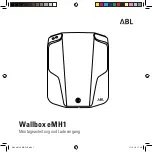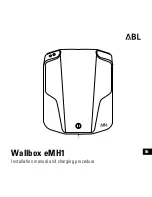
IMPORTANT PRECAUTIONS
●
Do not leave the charger unattended while in use.
●
Disconnect the battery and remove input power from the charger immediately if the charger
or battery becomes hot!!
●
Disconnect the battery if it begins to swell while being charged!
●
Do not attempt to charge any battery types other than LiPo and LiFe as permanent damage to the battery and charger
could result.
●
Do not allow water, moisture or foreign objects into the charger.
●
Do not block the air intake holes, which could cause the charger to overheat.
●
Do not attempt to use batteries with more cells or total voltage than listed in the specifi cations.
●
Do not place the charger or battery on fl ammable surfaces or near combustible materials while in use, such as carpet,
cluttered workbench, paper, plastic, vinyl, leather, and wood, inside an R/C model or full sized automobile.
●
Allow the charger and battery to cool down between charges.
●
Always disconnect the charger from its power source when not in use.
GLOSSARY OF TERMS
Amps (A):
The unit of measure for charge current.
Milli-amps (mA):
A unit of measure for current, being 1/1000 of an amp (.001A). So 2500mA is the same as 2.5A
(2.5
1000). Or, to convert amps to milli-amps, multipy the A number by 1000. So .025A is the same as 25mA.
Capacity and milli-amp hours (mAh):
The amount of energy a battery can store is called its
capacity
, which is defi ned
as how much current a battery can supply constantly over one hour of time. Most hobby batteries are rated for capacity
in
“mAh”
or
milli-amp hours
. A 650mAh battery can deliver 650mA of current for one hour (650mA
1hr = 650mAh). A
3200mAh battery can deliver 3200mA (3.2A) of current for one hour (3200mA
1hr = 3200 mAh), etc.
CC/CV:
Lithium based batteries are charged using the “Constant Current/Constant Voltage” method (cc/cv). Constant
current is delivered during the fi rst part of the charge. When the battery reaches a pre-set voltage, constant current is no
longer delivered and a constant voltage is applied to the battery. As the battery’s voltage becomes equalized to the voltage
on the charger’s output, charge current will steadily begin to drop. This is normal. When current reaches an approximate
value of 1/10C, the charge process will end completely.
“C” rating:
Capacity is also referred to as the “C” rating. Some battery suppliers recommend charge currents based on the
battery’s “C” rating. A battery’s “1C” current is the same number as the battery’s rated capacity number, but noted in mA or
amps. A 600mAh battery has a 1C current value of 600mA, and a 3C current value of (3
600 mA) 1800 mA or 1.8A. The
1C current value for a 3200mAh battery would be 3200mA (3.2A), etc.
INPUT POWER
AC Input:
For indoor use, connect the AC power cord
to a 110V-240V AC outlet.
The charger will be on at all times when connected
to input power. Disconnect the charger from input
power when not in use.
CONTROLS
2
CARE AND HANDLING OF LiPo/LiFe BATTERIES
WARNING!! DO NOT try to charge lithium-polymer (LiPo) or lithium-ferrite (LiFe) cells in the same
way as other battery types! Always read the instructions that are included with your lithium batteries
carefully before use. Failure to follow these care and handling instructions can quickly result in
severe, permanent damage to the batteries and their surroundings and even start a FIRE!
●
ALWAYS charge lithium batteries in a fi reproof location, which could be a container made of metal or ceramic tile.
Monitor the area with a smoke or fi re alarm, and have a lithium approved fi re extinguisher available at all times.
●
ALWAYS
use a LiPo charge bag when charging lithium batteries, such as the Great Planes
®
SafeCharge
™
LiPo
Battery Charge Bag (GPMP0751).
●
NEVER
attempt to extinguish a lithium fi re with water or a non-lithium approved fi re extinguisher! Use
ONLY
a
“Class D” fi re extinguisher.
●
ALWAYS
provide adequate ventilation around LiPo/LiFe batteries during charge, while in use, and during storage.
●
NEVER
allow LiPo/LiFe cells to overheat at any time, as they can and usually will become physically damaged and
could possibly
EXPLODE
or catch
FIRE!!
If a battery becomes overheated (over 140°F, 60°C),
disconnect it from
the charger
IMMEDIATELY!
●
NEVER
continue to charge LiPo/LiFe batteries if the charger fails to recognize full charge. LiPo/LiFe cells which
swell or emit smoke may be in an overcharge condition and should be disconnected from the charger immediately.
●
NEVER
charge LiPo/LiFe batteries at currents greater than the maximum rated current as specifi ed by the battery’s
manufacturer.
●
NEVER
allow LiPo/LiFe cells to come in contact with moisture or water at any time.
●
NEVER
allow the internal electrolyte from LiPo/LiFe batteries to get in the eyes or on skin – wash affected areas
immediately if they come in contact with the electrolyte and contact your physician!
●
ALWAYS
keep lithium batteries away from children.
DETERMINING BATTERY SPECIFICATIONS
Always read your battery’s label and/or
instruction sheet before use. Check to
determine how many cells it contains or its
nominal rated voltage. The chart at right
is a quick reference for determining this
information.
STARTING CHARGE
1. Insert the AC power cord into the charger.
2. Insert the AC cord into a wall socket (100 – 240V). All LEDs will light for 1 second and the charge status LED will fl ash
green which indicates the charger is ready to charge.
3. Select the battery type LiPo/LiFe by the toggle switch.
4. Select the proper charging current 1A/2A/3A by the toggle switch.
5. Connect the battery main charge lead to the battery socket which is in the front side of the charger. Connect the battery
balance wire to the balance port, which is in the right side of the charger.
6. The charger will start charging. The charge status LED and the cell status LED will glow constant red. If the battery
pack is 2-cell, cell 1 and cell 2 LEDs will glow constant red. If the battery pack is 3-cell, cell 1, cell 2, and cell 3 will
glow constant and so on.
7. During the charging process, when the charge LED glows constant red, the charger is charging in constant current
mode. When the charge LED glows constant orange, the charger is in constant voltage mode.
8. When the cell LED is fl ashing, the cell is discharging for balancing.
9. When the battery is fully charged, the charge status LED will glow constant green.
10. Unplug the battery from the charger and charger status LED will fl ash green which indicates the charger is ready to
charge another battery.
1S
2S
3S
4S
3.3 V
6.6 V
9.9 V
13.2 V
Voltage Chart
Number of Cells
LiFe Nominal Voltage
3.7 V
7.4 V
11.1 V
14.8 V
LiPo Nominal Voltage
3
d
AC 100-240V Power Jack
Cell 1 LED Indicator
Cell 2 LED Indicator
Cell 3 LED Indicator
Cell 4 LED Indicator
Charge Current Switch
Battery Type Switch
Battery Socket
Charge Status LED Indicator
Balance Sockets






















